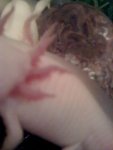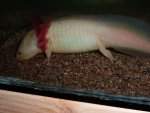The gills look pretty good from what I can see. The most likely cause, in my opinion, is the other axolotl having a bite if you don't see any other signs of illness or fungus.
The are a couple of things you can do to stop this happening. Firstly, feed them at opposite ends of the tank, this will avoid fights over food and accidental biting (those gills can look a lot like worms!), make sure they have enough food, appropriate to size, age and temperature of the water.
A last resort if they are always taking chunks out of each other is to separate them, either with a tank divider if your tank is large enough, or in separate tanks. I've had to do this with my female, she has always been a biter and likes to bite gills and legs, so she lives in a different tank to the boys now.
Good luck!
By the way if the axolotls are juveniles it's likely they will grow out of biting each other.







